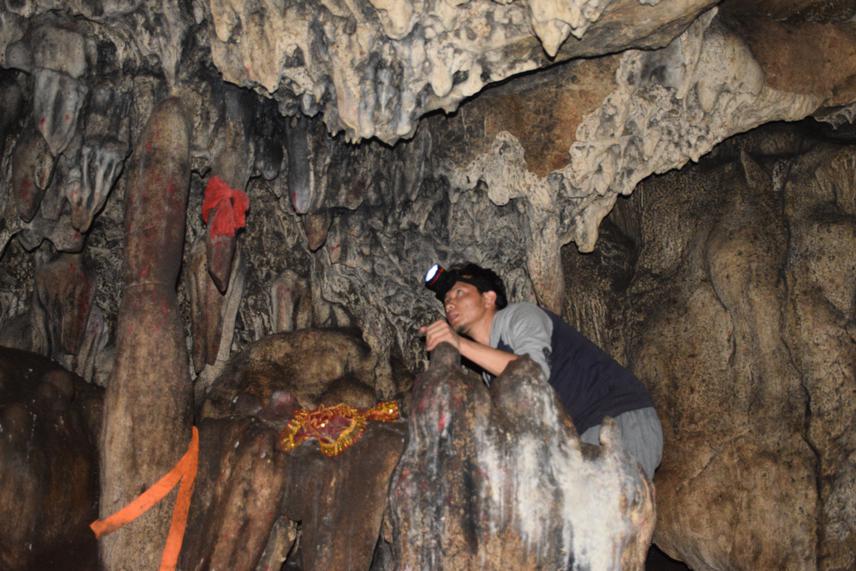Sangay Tshering
This project will document bat diversity and create baseline information on habitat assessment of Blandford’s Fruit Bat (Sphaerias blanfordi). The project is also aimed at Capacity Building for Conservation of bats.

Project leader observing bats in roosting site (holy cave) in study area.
The project will explore diversity of bats in Chukha District and habitats assessment of Blandford’s Fruit Bat (Sphaerias blanfordi) at Ganghlakha village under Geling block (Chukha District) with a view to highlight their conservation. Demographic pressure and rapid economic growth in a region have threatened Blandford’s Fruit Bat as Ganghlakha is only reported habitat in country by IUCN (2008). Ecologically bats are good pollinator and biological pest controller yet; less study are conducted in Bhutan to understand their status and conservation threats.
Bats are a critical component of South Asia’s threatened fauna. Conservation of small mammals has gained scientific attention in Bhutan however, only flagship species are focused and prioritized currently. Bats are the least studied species of small mammals, in particular Blanford's Fruit Bat. Therefore, there are huge lacuna of scientific knowledge base about bat morphology, distribution, ecology, habitat and diversity. So, study on bat is important for ecological function and conservation approach.
In Bhutan small mammals face threats such as habitats loss, degradation, fragmentation, forest fire and anthropological activities and bats are not exception (Poel, 2013). NGOs, agencies and community’s ignorance, lack of bat specialists and knowledge base are additional issues faced in Bhutan. It is also expected that the species would decline rapidly if conservation strategies and programmes, policies and mitigation measures are not taken into account. It is henceforth, important to enrich the current knowledge and capacity building for the conservation of bats.
Stratified Random Sampling, vegetation composition analysis, food diversity and abundance study, physical environment analysis, conservation capacity-building and threat assessment are designed to carry out and will be analysed using the GIS, SPSS and biodiversity professional. This project will document bat diversity and create baseline information on their ecological status, types and intensities of threats and the various conservation actions required besides conservation awareness.